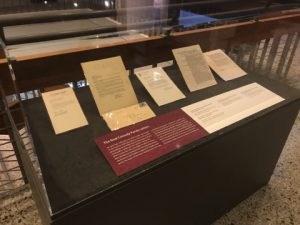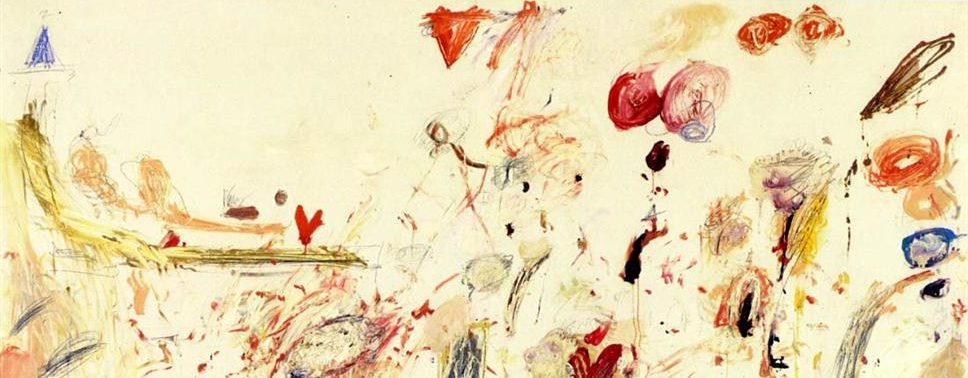I investigated “The Neal Cassady Parole Letters” case. The exhibit is a large, glass case filled with a plaque detailing the context in which the documents were written, a list of the contents with a short description of each—almost like a table of contents, a summary of the case against Cassady, and then the four letters themselves. The letters consist of his literary peers vouching for his value to the community, and recommending his parole. Cassady was serving a two year sentence for trying to sell a small amount of cannabis to an undercover agent. I was drawn to this case due to the clear influence Cassady’s work had on his peers, many of whom didn’t know him personally but were still willing to fight for his parole.
I chose this display because it encompasses three ideas which we have discussed in class and I find fascinating: the profound effect that works of literature can have, collaboration (something which will be very important to my final project), and relative morality. Cassady, while he broke the law, committed a non-violent, victimless crime and his peers, who all saw his literary value outside of prison, chose their own beliefs on what was wrong and right over the prescribed values of the law, petitioning for his parole. For my own project, I would like to adapt the “table of contents” for Barrigan’s collaborations, giving them a name and a short description of their importance.

From this exhibit, I would be curious about Cassady’s contributions upon release from prison. To have an idea of his value, I would need to research his publications post-prison, check his collaborations as well as determine what his peers and critics thought of his publications. This type of questioning would likely require archival research, as well as some general searches.

